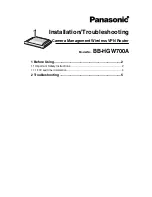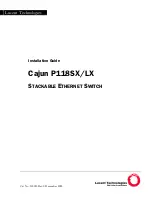
On-Net Surveillance Systems, Inc.
NetDVMS 6.5e
Removal
136
•
If a
Status Information
window appears on your screen during installation, simply click its
OK
button (the window simply provides a summary of what has been removed).
5. Click
Finish
.
Removing Video Device Drivers
Video device drivers are small programs used for controlling/communicating with the camera devices connected to an
NetDVMS system. To remove the video device drivers, do the following:
1. Open
Windows'
Control Panel
, and select
Add or Remove Programs
.
2. In
the
Add or Remove Programs
window, select the
Video Device Pack Vx.x
entry (where
x.x
indicates the
relevant version number), and click the
Remove
button.
3. You will be asked to confirm that you want to remove the Video Device Drivers. Click
OK
to remove the
Video Device Drivers.
Removing the Viewer
You cannot remove the Viewer separately; the Viewer is removed as part of the surveillance server software removal.
See
Removing the Surveillance Server Software
or
Removing the Entire Surveillance System
.
Removing the Download Manager
The
Download Manager
is removed separately from the NetDVMS software:
1. In
Windows'
Start
menu, select
Control Panel
, and select
Add or Remove Programs
.
2. In
the
Add or Remove Programs
window's list of currently installed programs, select
Download Manager
.
3. Click
the
Remove
button.
Removing Installation Files for End-User Features
Upon installation of NetDVMS, your surveillance system server by default contains installation files for a number of
end-user features. The installation files lets you install the end-user features on the surveillance system server, and
make them available to your organization's users through the
Download Manager
.
You can remove installation files for non-required features from the surveillance system server. This can help you
save disk space on the server if you know that your organization is not going to use certain features, for example non-
relevant language versions:
1. Open
the
Installers
folder located in the NetDVMS installation folder.
1. Select the required language sub-folder, then delete the unwanted installation (.exe) files.

































